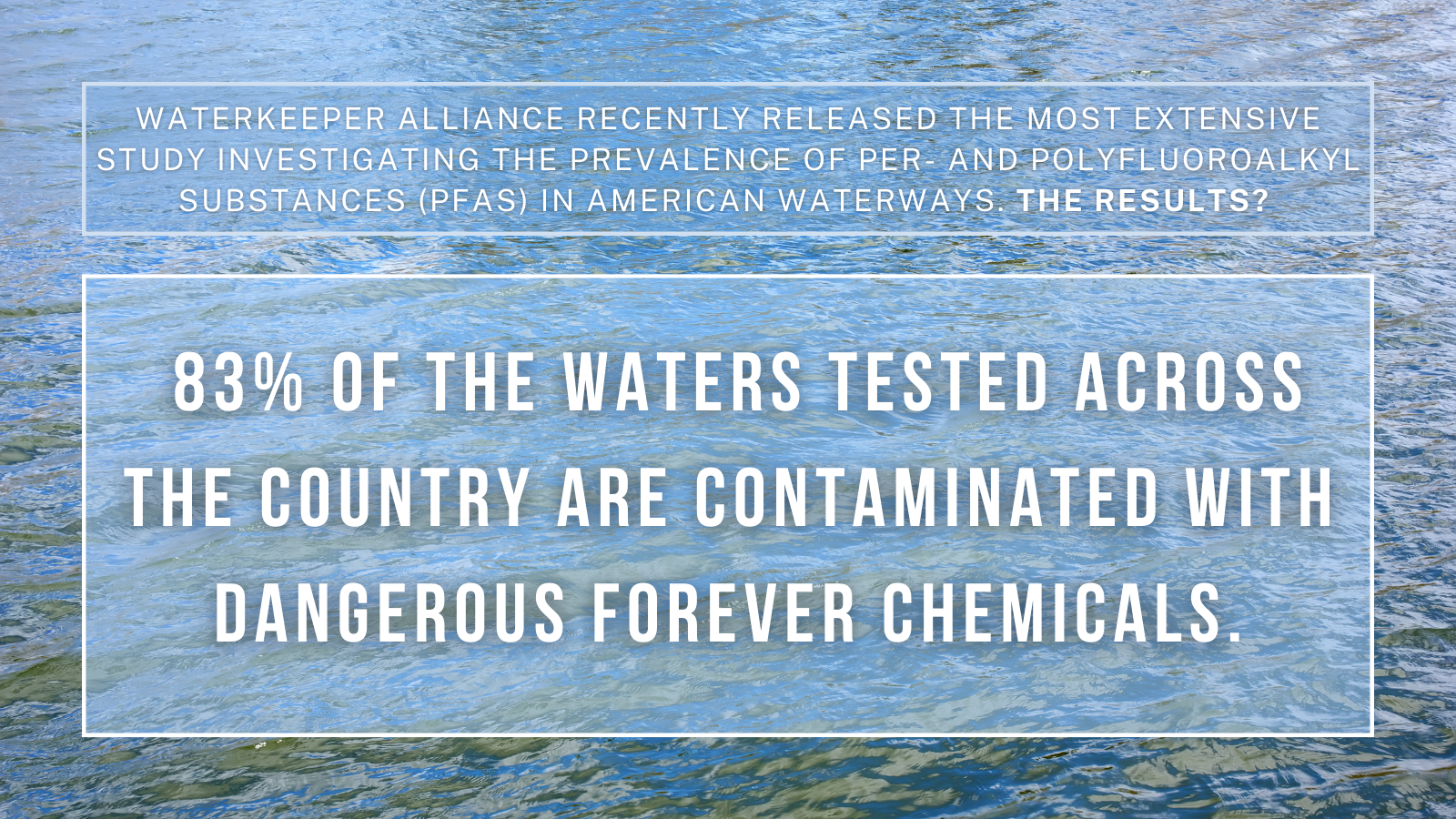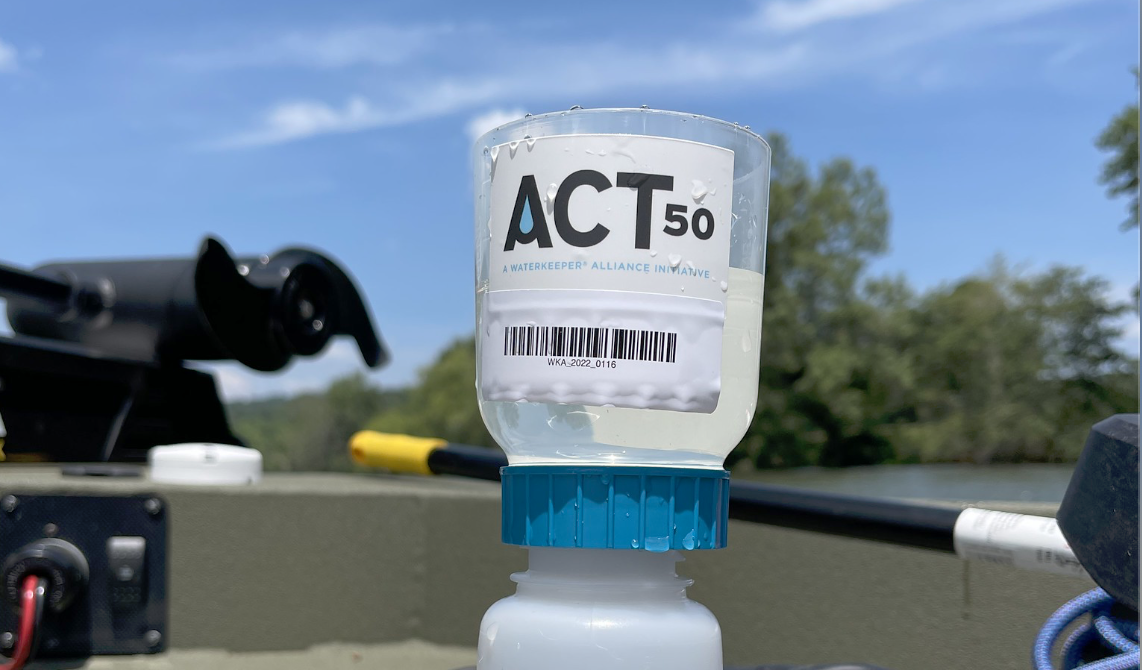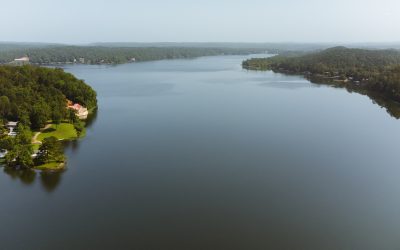Today, Waterkeeper Alliance released a groundbreaking new analysis of American waterways that sounds the alarm on a PFAS pollution emergency. In a test of 114 waterways from across the country, 83% were found to contain at least one type of PFAS—dangerous per- and polyfluoroalkyl substances that are widely linked to serious public health and environmental impacts. Samples collected on Neely Henry Lake, a major drinking source for many communities, had the highest concentrations in the Alabama for PFOA (4,200 times greater than the current health standard of 0.004 ppt), PFOS (220 times greater than the current health standard of 0.02 ppt) , PFHxA, PFPeA, and PFBS.
A total of 113 local Waterkeepers, including Coosa Riverkeeper collected samples from 114 waterways across 34 states and the District of Columbia (D.C.). Independent analysis indicates a shocking level of contamination, with 94 participating Waterkeeper groups confirming the presence of PFAS in their waterways. Waterways in 29 states and D.C. were found to be contaminated by at least one, but most frequently, many revealed the presence of up to 35 different PFAS compounds.
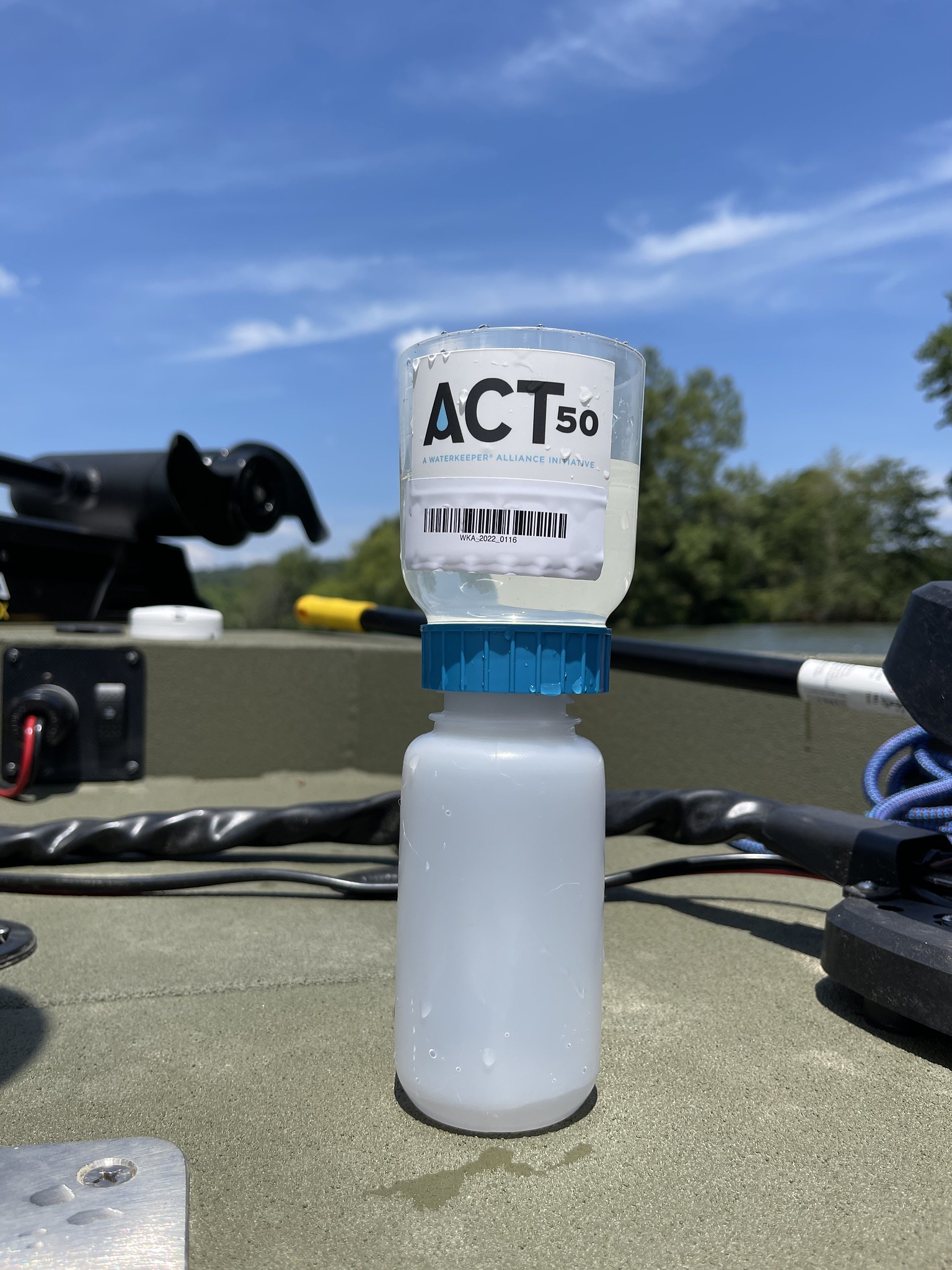
“When we began testing waterways for PFAS earlier this year, we knew that our country had a significant PFAS problem, but these findings confirm that was an understatement. This is a widespread public health and environmental crisis that must be addressed immediately by Congress and the U.S. Environmental Protection Agency (EPA). To begin tackling this urgent problem, Congress should start by passing the Clean Water Standards for PFAS Act of 2022, and EPA must prioritize using the funding from the Bipartisan Infrastructure Law to coordinate national monitoring and adopt regulatory standards for PFAS contamination. This report provides the information necessary for federal and state governments to take action and protect the health and safety of our communities.”
In some places, like creeks connected to the Potomac River in Maryland, the Lower Susquehanna River in Pennsylvania, and the Niagara River in New York, the level of contamination is thousands to hundreds of thousands times higher than what experts say is safe for drinking water. This is of particular concern as an estimated 65% of Americans source their drinking water from surface waters similar to those sampled.
These findings are an important step toward filling in a major data gap and validate the Alliance’s call to EPA for increased and widespread monitoring to gain a complete picture of PFAS contamination in all watersheds across the country.
What the Data Shows on the Coosa
Findings from Neely Henry Lake on the Coosa River include:
- Neely Henry Lake on the Coosa River had the highest PFAS detections in the state of Alabama for the five most prevalent PFAS compounds including:
- PFOA: 16.8 ppt
- 4,200 times greater than the health standard of 0.004 ppt
- PFOS: 4.4 ppt
- 220 times greater than the health standard of 0.02 ppt
- PFHxA: 14 ppt
- PFPeA: 16.9 ppt
- PFBS : 48.7 ppt
- 13 different PFAS chemicals were detected in our samples collected on Neely Henry Lake

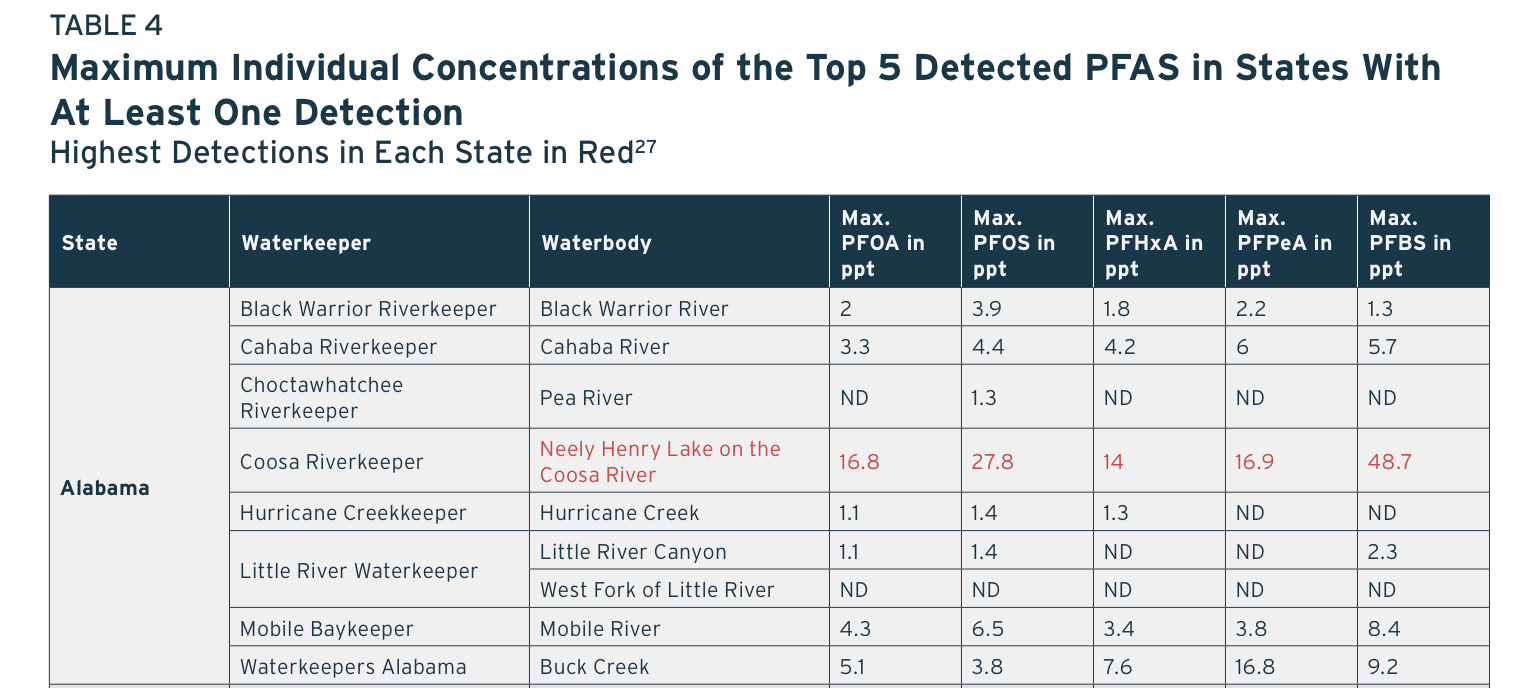
Since at least the 1950s, PFAS have been widely used in manufacturing and are found in many consumer, commercial, and industrial products. Often referred to as “forever chemicals,” PFAS do not break down over time. Instead, these dangerous chemicals accumulate in people, wildlife, and the environment. As a result, PFAS have been found in surface water, air, soil, food, and many commercial materials. Scientific studies increasingly link these toxic chemicals to serious health conditions such as cancer, liver and kidney disease, reproductive issues, immunodeficiencies, and hormonal disruptions.
Despite serious health risks, there are currently no universal, science-based limits on the various PFAS chemicals in the United States. For many PFAS chemicals, the EPA has not even set a health advisory limit that would give the public a baseline to determine what amount of PFAS is unhealthy in drinking water. In most cases, the EPA is not doing adequate monitoring for these chemicals, which is why these findings are so unique and important.
“Earlier this year, the Coosa River was listed as the 5th Most Endangered River in the United States. The Coosa River and its people have suffered enough. From leaking coal ash ponds to toxic legacy pollution from PCBs to failing wastewater treatment systems, the last thing this river needs is inaction from our state and federal agencies when it comes to PFAS contamination. We need Congress to pass The Clean Water Standards for PFAS Act. This legislation could help stop PFAS contamination at its source, which will be necessary if we hope to reduce exposure to these dangerous “forever chemicals” accumulating in people, wildlife, and in the environment. Despite the obvious danger and widespread prevalence of these contaminants, they are mostly unregulated by the U.S. Environmental Protection Agency (EPA). The EPA needs to adopt and enforce regulatory standards to protect people, wildlife, and the economy that rely on the Coosa River for drinking water and sustenance.”
This data plainly demonstrates that Congress and EPA must act with urgency to control persistent PFAS contamination across the country. The current lack of oversight puts the health and safety of communities and ecosystems across the nation at risk and results in costly cleanup and treatment activities to remove PFAS contamination after it has occurred. To learn more, visit waterkeeper.org/pfas.
